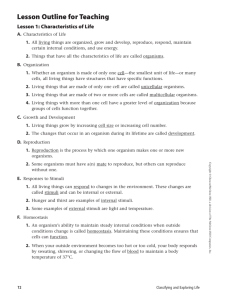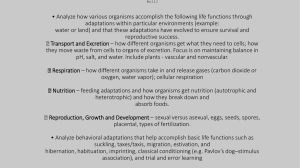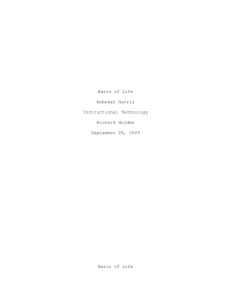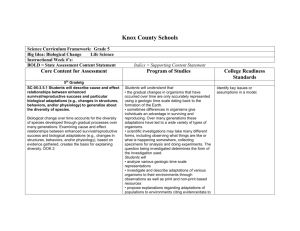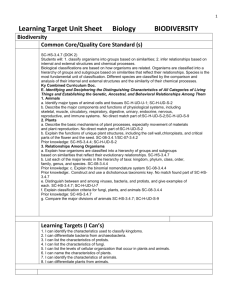Grade-Six-Standards
advertisement
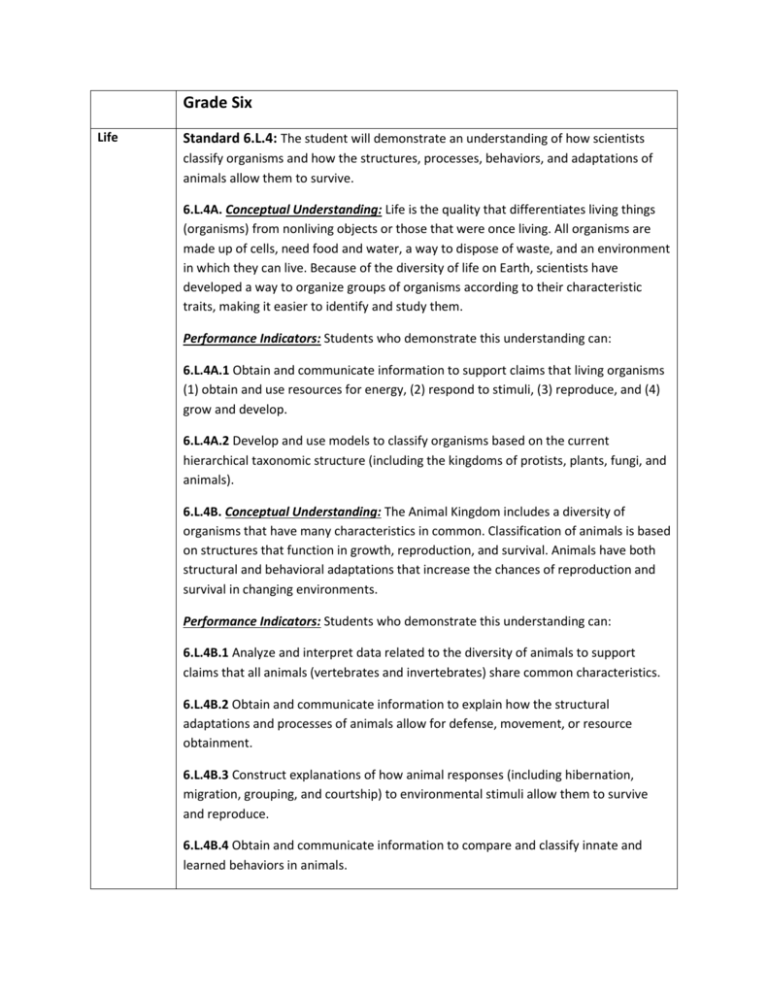
Grade Six Life Standard 6.L.4: The student will demonstrate an understanding of how scientists classify organisms and how the structures, processes, behaviors, and adaptations of animals allow them to survive. 6.L.4A. Conceptual Understanding: Life is the quality that differentiates living things (organisms) from nonliving objects or those that were once living. All organisms are made up of cells, need food and water, a way to dispose of waste, and an environment in which they can live. Because of the diversity of life on Earth, scientists have developed a way to organize groups of organisms according to their characteristic traits, making it easier to identify and study them. Performance Indicators: Students who demonstrate this understanding can: 6.L.4A.1 Obtain and communicate information to support claims that living organisms (1) obtain and use resources for energy, (2) respond to stimuli, (3) reproduce, and (4) grow and develop. 6.L.4A.2 Develop and use models to classify organisms based on the current hierarchical taxonomic structure (including the kingdoms of protists, plants, fungi, and animals). 6.L.4B. Conceptual Understanding: The Animal Kingdom includes a diversity of organisms that have many characteristics in common. Classification of animals is based on structures that function in growth, reproduction, and survival. Animals have both structural and behavioral adaptations that increase the chances of reproduction and survival in changing environments. Performance Indicators: Students who demonstrate this understanding can: 6.L.4B.1 Analyze and interpret data related to the diversity of animals to support claims that all animals (vertebrates and invertebrates) share common characteristics. 6.L.4B.2 Obtain and communicate information to explain how the structural adaptations and processes of animals allow for defense, movement, or resource obtainment. 6.L.4B.3 Construct explanations of how animal responses (including hibernation, migration, grouping, and courtship) to environmental stimuli allow them to survive and reproduce. 6.L.4B.4 Obtain and communicate information to compare and classify innate and learned behaviors in animals. 6.L.4B.5 Analyze and interpret data to compare how endothermic and ectothermic animals respond to changes in environmental temperature.



